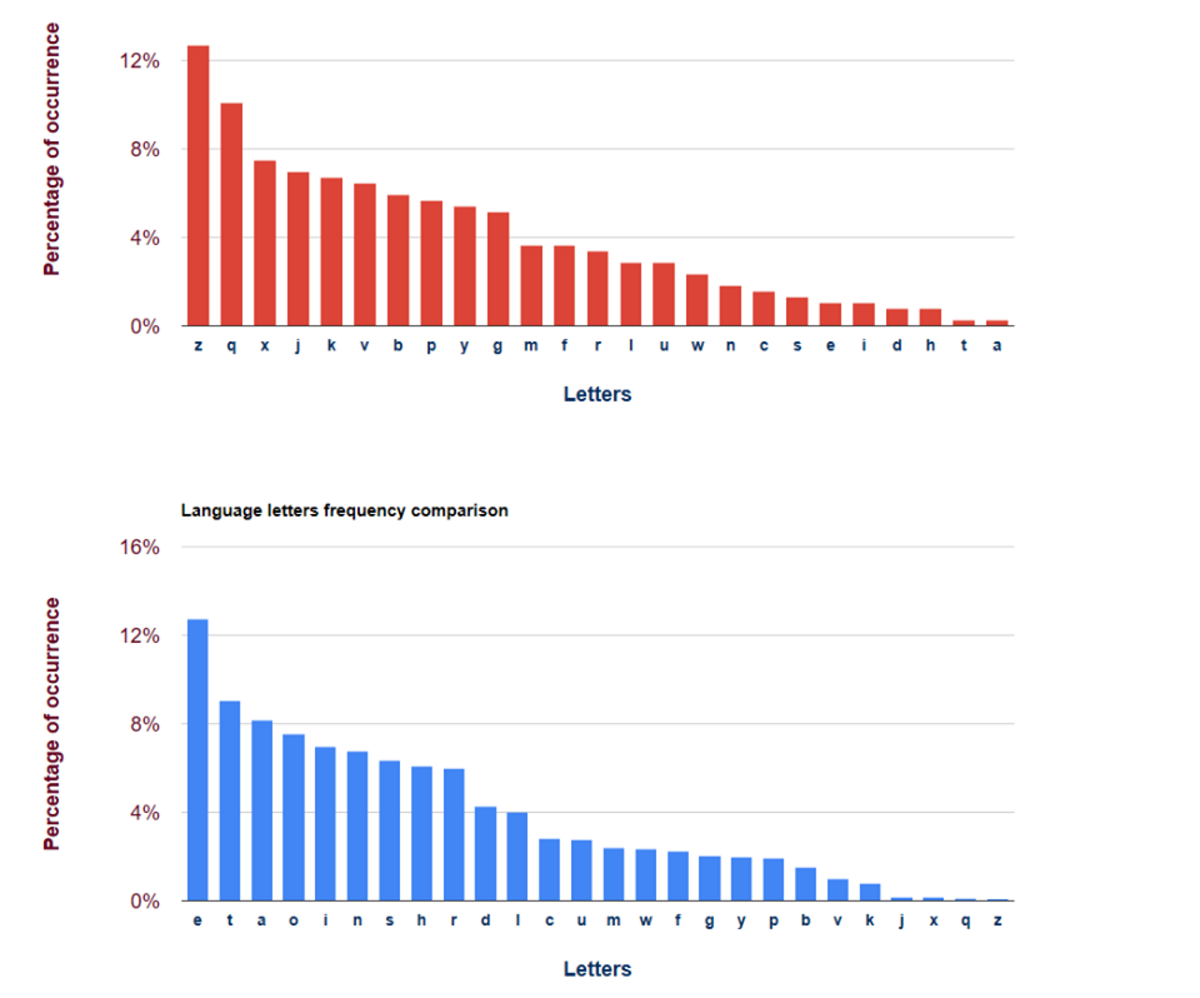Have an amazing day!
Decode the following message and find the answer.
JVZ BPJMFG TMKWIFR SZ XSFZ QJ GZWJGZ QPKB HMEEFZ KL JVZ MVGZYBQJJG QPZ KUHJYQXVWZ JL EKHL'B URBQZYR. ZNZYRGXR CZ ZVWJMVQZY ZVWJGZG UZBBXDZB QPXQ CZ XFUJBQ XMQJUXQKWXFFR QYXVBFXQZ CKQP JMY SYXKVB. QPZ LXWQ QPXQ QPKB QZAQ GZUXVGB X FKQQFZ SKQ JL BQKVIR PXYG CJYI UXIZB KQ JSNKJMB LJY QPZ BJFNZY QPXQ JMY UKVG KB QPZ WJJFZBQ UXWPKVZ ZNZY. XVRCXRB, QPZ XVBCZY KB LKNZ PMVGYZG LKLQR-LKNZ UKFFKJV LJMY PMVGYZG ZKDPQR-QPYZZ QPJMBXVG JVZ PMVGYZG VKVZQR-QPYZZ. PXNZ XV XUXEKVD GXR.
The answer is 555483193.
This section requires Javascript.
You are seeing this because something didn't load right. We suggest you, (a) try
refreshing the page, (b) enabling javascript if it is disabled on your browser and,
finally, (c)
loading the
non-javascript version of this page
. We're sorry about the hassle.
The problem can be solved by analyzing the frequency of letters in the English language. You can easily find the graph online, then make a frequency graph for the encoded message. The graphs, as expected, are not exactly equivalent (the message is too short), but it works for the ten most frequent letters. You can see that each real letter was substituted with its opposite in the frequency graph (e became z, t became q, etc) Once you substitute the real letters, you can find the message and the required number.
Once you substitute the real letters, you can find the message and the required number.
Shortcut: The title is the last sentence of the encoded message.